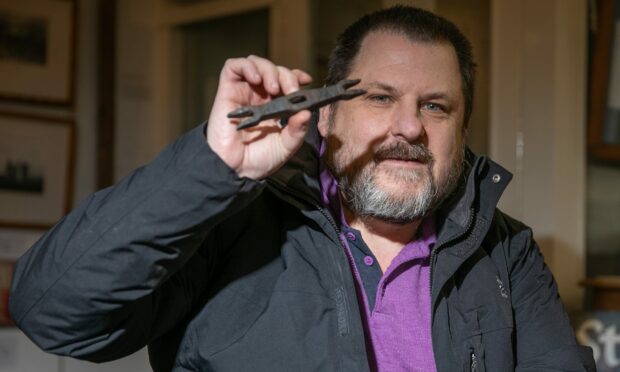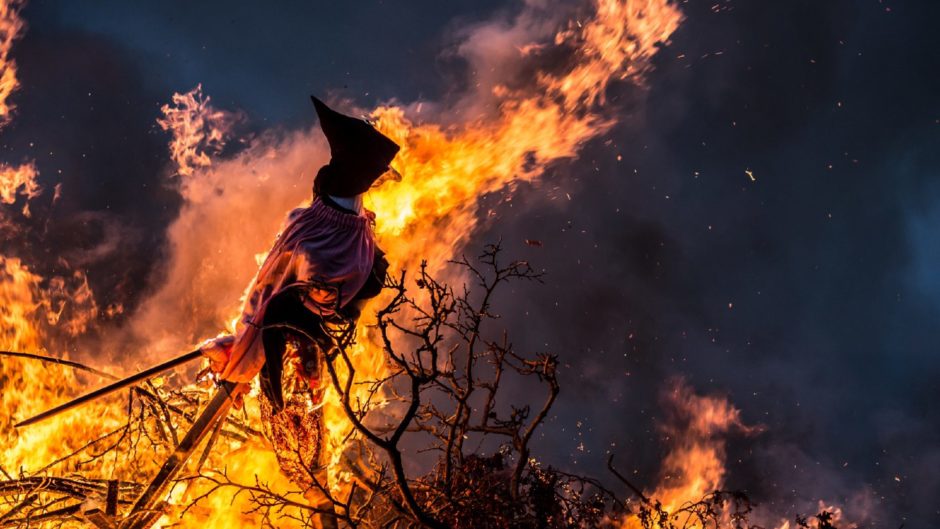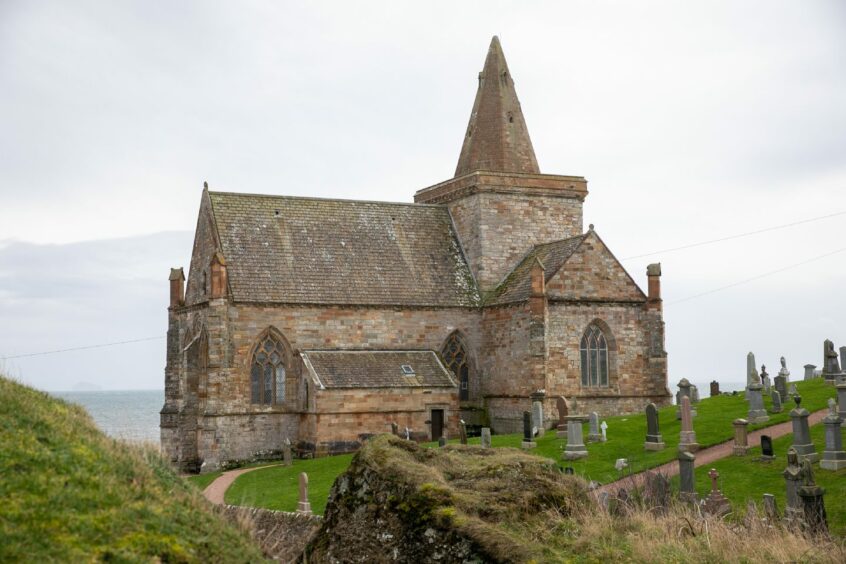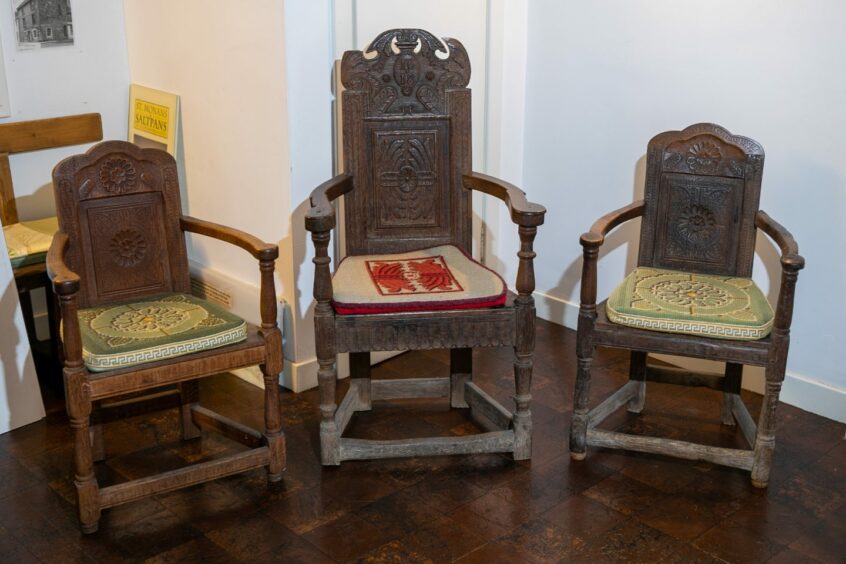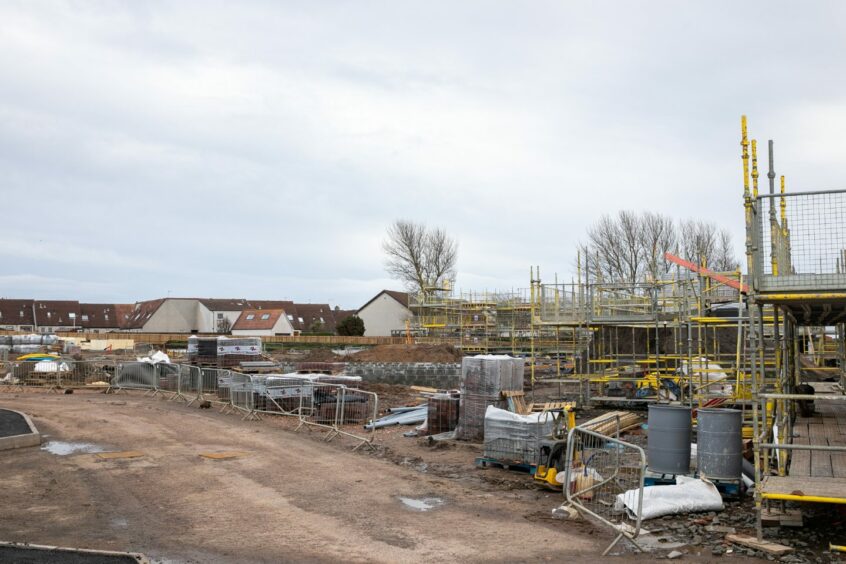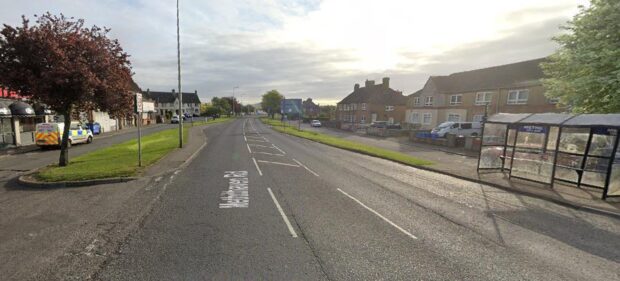When St Monans resident Barbara Cockburn bought Leonard Low’s The Weem Witch a few years ago, she found it to be a fascinating and accessible book about the fate of East Neuk women who were accused of witchcraft in the 17th century.
The innocent women were picked on simply for being thought “odd”, for being young and beautiful and taken advantage of by men, or, just for being a bit stroppy.
“It is a horrendous story and at the time I thought that there ought to be a memorial to all those women,” says Barbara.
“The way they were dealt with was so excessively cruel and on some occasions the whole town ganged up on them and pursued them with such evil malice it was almost unbelievable.”
Torture and death of Maggie Morgan
One story that stuck in her mind was that of 17-year-old Maggie Morgan because, like Barbara, she lived in St Monans.
She was accused of being a witch, of being able to take on the appearance of a rabbit and of causing the death by drowning at sea of a local gentleman who had abandoned her after getting her pregnant.
She was tortured and burned to death on Kirk Brae in 1651.
Her ashes were taken up to the loft in the Kirk, known as the Burnt Loft, to be scattered and blown away and not settle on consecrated ground.
“When St Monans were building our skiff, I was going to suggest that she be called “The Maggie Morgan”,” says Barbara.
“I failed to suggest it in time and she is called ‘The Sea Queen’ which is lovely and more appropriate.
“But then I was looking at the St Monans community website and saw that they were looking for suggestions for new street names.
“I immediately thought I mustn’t miss this opportunity and suggested Maggie Morgan Way or similar.
“I thought that people who knew about Maggie as well as people who were told about her would be sure to feel the same way as I did.”
Campaign group support
Barbara’s suggestion of a street named after Maggie Morgan was supported by Remembering the Accused Witches of Scotland (RAWS).
This constituted group of volunteers from all corners of Scotland, strives to raise the profile of the plight of people accused of witchcraft in years gone past.
The purpose of RAWS has evolved to include the advancement of the arts, heritage, culture and science and the promotion of equality and diversity.
It also aims to highlight the perils of stigmatization and wants state and church to recognise that a “great wrong” was carried out during the witch trials.
Crail-based RAWS chairperson Sheila Gaul said the group was “thrilled” to have played a role in having Maggie Morgan Drive included in a new housing development, now under construction, in St Monans.
In 2019, five streets in South Queensferry were named after accused witches – Helen Thompson, Marion Dauline, Marion Stern, Marion Little and Isabel Young – although those streets only bear their surnames.
In 2021, Kilwinning named a street after Bessie Grahame.
“This was down to the hard work conducted by Heather Upfield, local historian and member of Remembering The Accused Witches of Scotland,” says Sheila.
“And now Maggie Morgan is being remembered, by having a street in the new development by Lochay in St Monans named after her, Maggie Morgan Drive.
“Men are currently honoured by many statues, plaques, and street names in Scotland.”
Sheila believes, however, that much more needs to be done to acknowledge the past.
‘Forgotten’ history of witch trials
Women are well under-represented and at times even invisible, she says.
Nearly all the victims of the Witch Trials, which took place in Scotland from 1563 to 1736 are forgotten.
Records show around 4,000 people were accused of witchcraft in Scotland between 1563 and 1736, with women accounting for around of 85% of suspects.
“The witch trials that took hold in Scotland from 1563 to 1736 are not a well-remembered part of our history,” she says.
“This is not because it was an uneventful time in Scotland, rather a time of great social, cultural and religious upheaval.
“We at RAWS believe it is a part of our nation’s history, and all should know about!
“It is believed that over 4,000 people, were accused. They were persecuted, tortured and killed by the crown, the state and the church working together, to rid the country of ‘evil’.
“During the witch hunt years there were approximately 350 known accused witches in Fife.
“From this figure, the East Neuk has approximately 60, most notably in Crail with 25, Pittenweem with 21 and St Monans has two that can be found in records and one for the 15th century in folklore.”
Widespread impact
Sheila says there are few places in Scotland that escaped the effects of the witch finding craze.
Until recently it was not in any part of the public’s attention other than at Halloween.
However, the last few years have seen an increase in the interest of these historic events, leading to the founding of RAWS in 2019.
Much has been written and campaigned for about the accused – notably the lack of memorials to the victims.
“The story of Maggie Morgan is not well documented, unlike some of the later trials in the East Neuk,” says Sheila.
“We know that her story is a sad tale, and one as old as time.
“By all accounts Maggie was a beautiful young woman and this made her stand out.
“She caught the attention of a young gentleman from the Elie house.
“He began making advances towards her. It is unclear how long he tried to woo her before he got what he wanted.
“Maggie, as a young woman in 1650, would have been a God-fearing person.
“She would have dressed modestly and adhered to all the social and religious rules for the time, and her place in it.
“Maggie and her family would not have wanted her to have a bad reputation or shame herself and her family in this close-knit community.
“A relationship between someone of his standing and a local girl of no status would never have been permitted in that time.”
Questioned by church
Maggie became pregnant and the “gentleman” abandoned her.
When the child was born, the church began to question her about the father.
She was found guilty and was to make amends for her sins by standing at the entrance of the church for three consecutive Sundays, dressed only in an old sack, as the parishioners entered to the sound of the church bell ringing.
She had to repeat the words “fause (false) tongue that lied”.
To complete her humiliation, she was then placed on a cuttie stool, a wooden chair that would be hoisted high above the congregation for all to see as she was berated by the minister.
Having carried out her sentence, her guilt was forgiven by the church, but her life was destroyed.
She did however still present a problem. With her being around there would always be local gossip.
She was said to be left bitter over her experience, devoid of all emotion other than that of revenge, and whether that was true or not, it offered the basis on which the problem she created could be removed.
Maggie was accused of witchcraft.
Burning Times
The Scottish Witch Trials of the 16th and 17th centuries, often referred to as the Burning Times, are generally a forgotten part of Scotland’s heritage.
Another group called Witches of Scotland launched a petition last year urging the Scottish Government to pardon, apologise and create a national monument to memorialise those accused and convicted under the Witchcraft Act 1563.
The tragic story of Maggie Morgan recently caught the attention of Laura Bates, founder of the Everyday Sexism Project.
Maggie was one of the main characters in Laura’s book “The Burning”.
Laura told RAWS campaigners that she thought the street name was a “wonderful idea”.
Bruce Bishop, historian and author who assisted with the research for The Burning, also supported it.
Bill Morris, treasurer of St Monans and Abercrombie Community Council, explained that The Baillies Chairs – pulled out of the church so that the minister and parishioners could witness Maggie’s burning – are in the custody of the East Neuk o’ Fife Preservation Society.
Weem Witch author Lenny Low is “delighted” Maggie is being remembered.
An account of Maggie Morgan’s story by RAWS committee member and author Greg Stewart can be read at www.raws.scot/news
